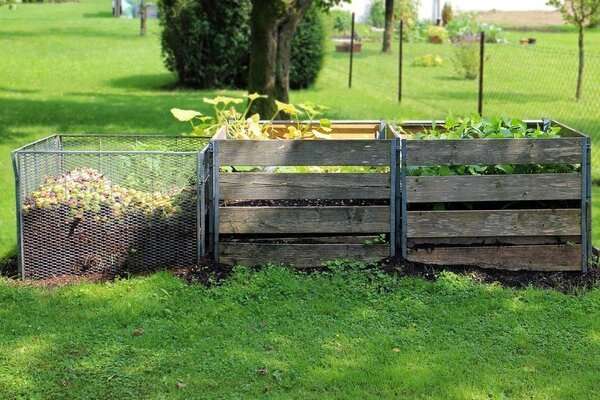Do you know how to achieve the concept of a compost bin? What good will the compost bin offer to you? By making yourself a compost bin, you can now add enough nutrients to your soil for gardening and prevent the ongoing trips of throwing trash in the yards. Avoid over-stuffing landfills within the yard by making compost bins at home without spending extra money on trash bags and increasing pollution.
Still, thinking about how to make compost bins yourself? Dive in to look at the steps you can follow to the do it yourself compost bin. Plus, look at the things you can compost or not, based on the preparation of compost bins.
How to Make a Do it Yourself Compost Bin – Step-by-Step:
Compost bins are all about reducing trash or stuffing the landfill. It is a huge blessing for people who don’t want to throw waste in the yard.
Select the bin:
Buy any plastic bin with a tight lid or recycle any container that is 24 inches tall or more. The fitted cover is essential as it keeps the soil moist and critters out. You can choose any bin with a neutral color, so it blends well within the backyard.
Drill holes within the bin:
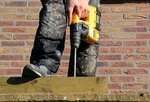
Make use of a drill for creating 8-10 holes within the bottom side of the container to aerate the bin.
Create the base:
Now place some dry leaves or shredded newspaper over the bottom side of the compost bin. Then fill it around ⅛-¼ complete. Dry leaves are one of the easiest ways of creating the base. Building a base allows you to pile the compost most finely.
Add dirt and sticks:
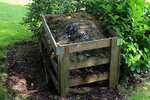
Next, add a layer of dirt over the newspaper or leaves layer till the container is half full. Again make sure to add plenty of layers. Use small sticks for proper drainage. Place enough sticks within the bottom side of the bucket, which ensures enough drainage holes preventing any clogging. Add enough brown materials and place the sticks tightly, so they roll around within the compost bin.
You can use green materials like coffee grounds, fruits and veggies, scraps, eggshells, grass clippings, and more. The brown materials for the compost bin include cardboard, shredded paper, cow/ horse manure, dead leaves, straws, mulch, and more.
Hopefully, the summary of materials you can add to compost help you build a massive compostable pile.
Toss the food scraps:

Next, place a layer of paper products or food scraps which you plan on composting. So, follow a list of things you plan on composting. For instance, you throw eggshells or lint. They are compost friendly, while the dog waste or lime is acidic, so keep them off-limits.
Avoid putting extra amounts of scraps within the composting bin to allow enough air to ventilate all over the container.
Roll the bucket again and again to add the compost pile. This evenly distributes the organic matter, moisture, or heat all over the bucket. Adding enough water and tossing it over helps you build a great pile of compost for your garden.
Stir the compost:
Now give the compost a little stir using a stick or a shovel, making sure to cover all food scraps using dirt. You can make use of a small compost pail or trash can for collecting all kitchen scraps till the time you plan on moving it outside. You can keep the trash underneath the sink for storing waste, but you need to empty it every day to avoid mold growth or attracting bugs.
Moisten:
Now spray a certain amount of lukewarm water till it becomes moist but do not over soak it. Moistening of compost is essential as it prevents the bugs and rodents from damaging the compost bin. However, make sure to spray the water rather than filing it to the extreme.
Drill holes over the top:
Make use of a drill for creating 8-10 holes within the lid and place securely over the bin’s top. This helps in creating proper airflow. Aeration is essential for building an incredible compost pile.
Find a spot for the compost bin:
Now place the compost bin within the shady area away from the house. For instance, if you live in an apartment and have no backyard, you can plan to place the compost bin within the patio. Avoid keeping it in the sun as it will excessively dry out the compost. You can find a post having shrubs for your convenience.
A sunny place for a compost bin will make it a great choice as it attracts more bugs, insects, and parasites to the compost bin with extreme sunlight, air, and temperature leading to significant compost buildup.
Collect the compostable:
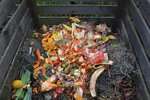
Once your compost bin is wholly set, add the food scraps when you get them. Make sure to stir each time correctly. Now add a collection of different stuff over the compost giving a special compost underneath the skin.
Wait for around 2-3 months until the compost is ready for the yard or within the garden. You can use enough potting soil or mulch and sprinkle it over the grass in the form of a lawn conditioner.
Avoid Composting These Items
Wondering whether you can add all materials in the compost bin or not? Then have a look at materials you cannot compost in the bins:
Pet waste:
Waste from animals like meat-eating animals such as dogs or cats contains micro-organisms and parasites which you don’t want within the gardens.
Charcoal:
The ashes and charcoal have a sulfur content which makes the compost highly acidic. If you add such acidic material within the compost, it can wither away the plants before growing.
Fats and oils:
This adds extra moisture to the compost pile.
Bones and meat:
Adding meat to the compost pile can lead to a strong smell attracting more bugs and rodents, and other scavengers. Give the leftover meat, bones, bone broth, or dog food to animals or others.
Citrus peels and onions:
Acidity in citrus scraps and onions can result in worm killing plus other micro-organisms which break down the compost.
Dairy:
Dairy can also get composted, but this increases the chance of scavengers over the compost pile.
Manure from horses:
The manure from horses can lead to the risk of weed seeds and parasites within the compost.
Coffee or tea bags:
You can try composting loose coffee beans, leaf tea, or coffee grounds but avoid tossing in coffee bags or tea. The bags do not decompose well and lead to the release of chemicals leading to break down.
Unhealthy plants:
Composting diseased plants can increase the risk of transferring diseases into new plants within the garden when laying down the compost.
Top 5 Compost Bin ideas
Three bin compost bin DIY:
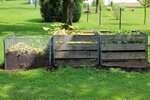
You need to create enough room with nutrient-rich soil. It is one of the easy compost bin ideas to build and create enough compost. Place it anywhere within the yard to offer enough room. You can paint and decorate it according to your wish.
Three-tiered worm compost bin:
This bin comes with three tiers that hold enough worms and soil, leading to simple buildup. It will help if you have a saw and a power drill, and different minor tools or supplies. It is an easy-to-build compost bin that you can build in less than two days.
DIY angled compost bin:
You are thinking about how to prepare a DIY angled compost bin? Build the compost bin, which is easy to access. You definitely will be able to toss old foods with green materials, making it easy to access soil. The angled compost bin makes it easy to build and accessible.
Upcycled cardboard box composting bin:
With milk cartons or boxes, it’s time to get started with the cardboard box compost bin. You can make use of cardboard boxes that you can get from fruits and vegetables grocery stores.
DIY cedar compost bin:
You can get hands-on inexpensive compost bins from the lumber yard or repurpose them. The front of such containers comes with removable boards to reach for stirring the compost or adding it as per the needs. You can take compost over the bottom of the bin, which means there is no leaning or reaching in to get over it.
How to collect compost tea from DIY compost bins?
You can easily collect compost tea, liquid fertilizer from the compost bin, and solid compost. You can perform it in two ways:
Place the compost bin having holes within the bottom, turning it into another container. Ensure the compost bin is not more than half within the bottom side of the bucket, making sure the drainage holes don’t sit within the tea.
Liquid starts collecting within the bottom side of the bucket as soon as the scrap will decompose and rain down the compost. Once the compost is completely drained, collect all the tea from the bottom side of the bin.
The next option for collecting compost tea is once the scraps are composted, move down the compost to another in which there are no holes. Now cover the compost having water to sit and then steep for around 3-4 days. You can now strain the compost and collect all the leftover tea.
FAQ
Is it OK to put eggshells in compost?
Yes, you can add eggshells to the compost because the eggshells serve as one of the richest sources of essential nutrients like calcium which meets the needs of plants. Drying the eggshells and then crushing them completely to add them to the compost bin can add critical nutrients to the bin.
Where should compost be in the sun or shade?
Putting compost in the sun can enhance the temperature and result in a fast work process of fungal and bacterial growth. It also enhances the growth of micro-organisms, plus it offers enough aeration with drainage.
What Items can you add to the Compost Bin?
The items you can easily add to your compost bin include green and brown composting materials.
Green composting materials include grass clippings, eggshells, fruits and veggie scraps, tea grounds, or coffee. However, the brown composting materials include cardboard, shredded paper, brown leaves, mulch, straws, cow manure, and much more.
Green materials are usually high in terms of nitrogen content compared to brown materials. It would help if you had a ratio of around 30:1 when talking about carbon: nitrogen. Each brown or green ingredient comes with different levels of nitrogen and carbon, which means you can check each element and add it to the compost bin.
Conclusion
Make an adorable compost station with do it yourself compost bin ideas to make your life easier. Getting your hands on the home-based compost bin can add organic nutrients to your soil, enhancing the growth of plants without the use of chemicals.
You might need to wait for around 2-3 months, making it an ideal choice for gardens or yards. Moreover, you may use the compost for potting soil or mulch and sprinkle it over your garden. It will serve as the lawn conditioner.
Hopefully, this guide will help you create some rewarding benefits of using the compost bin.

